Photo taken by Sammy Six
The Arabian horse, known for its elegance and enduring legacy, has a profound impact on global equine breeding. Rooted in the ancient deserts of the Arabian Peninsula, Arabian horses have been selectively bred for centuries by Bedouin tribes, resulting in a breed prized for its stamina, intelligence, and loyalty. This article delves into the rich heritage and global significance of Arabian horses in the realm of breeding.
Origins and heritage of the Arabian horse
The history of the Arabian horse is shrouded in mystery, with a distinctive identity that spans centuries, marked by complexities and contradictions. While the precise origin remains a subject of debate among authorities, the Arabian horse’s enduring characteristics have essentially remained unchanged over the centuries.
The question of where the Arabian horse originated is a challenging one, with conflicting theories suggesting its wild roots in northern Syria, southern Turkey, or the southwestern part of Arabia. The fertile crescent, extending from Iraq along the Euphrates to Egypt, is considered a probable region, offering an ideal environment for horse development. Despite the dry interior of the Arabian Peninsula, approximately 10,000 years ago, the domestication of the horse became possible through the assistance of the Bedouins, who ventured into central Arabia around 2500 B.C. with the prototype of the modern Arabian horse.
The origin of the word “Arab” remains unknown, with theories connecting it to nomadism and the desert. The term gained prominence in the Koran, specifically referring to Bedouins, and appeared in the Bible as “Kings of Arabia.” Early Arabs used the word to distinguish Bedouins from Arabic-speaking urban communities.
Historical & cultural Impact of arabian horses in ancient societies
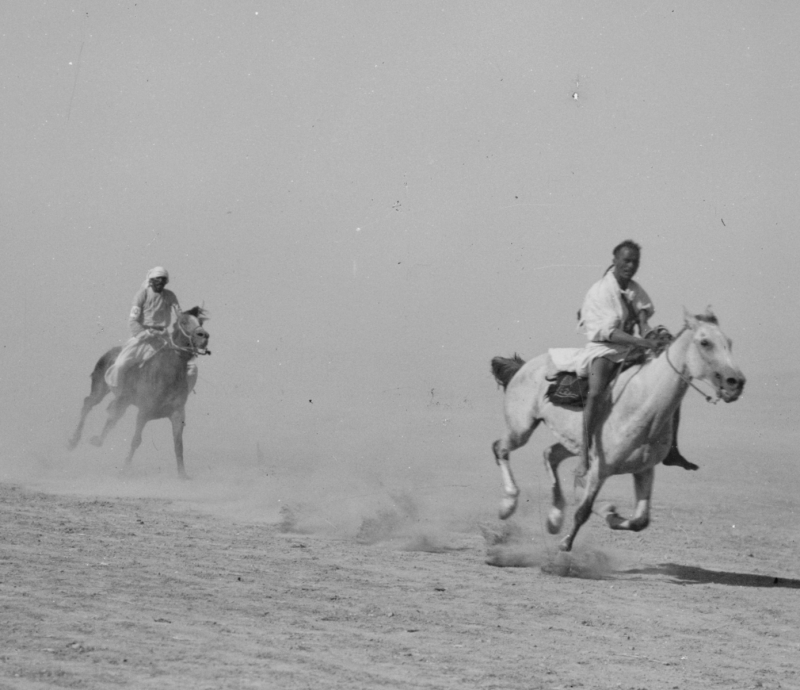
Bedouin horse race at Beersheba. Image by Thiophene_Guy
The Arabian horse, beyond its physical attributes, played a pivotal role in reshaping human history. Approximately 3500 years ago, the hot-blooded horse assumed a role of immense significance in the East, including the valley of the Nile. The Arabian breed altered human history and influenced societies from the Indus Valley to Mesopotamia.
The horse’s strength facilitated the extension of empires, including those of the Egyptians, Hurrians, Hittites, Assyrians, Babylonians, and Persians. The Arabian horse became a symbol of power, speed, and endurance. This breed’s influence extended beyond borders, creating a network that linked empires throughout the Eastern world.
The awe-inspiring Arabian horse depictions started appearing on seal rings, stone pillars, and monuments dating back to the 16th century B.C. Egyptian hieroglyphics and Old Testament writings extolled the horse’s virtues, emphasizing its role in shaping societies.
The Greek horseman Xinophon praised the Arabian horse’s beauty in 490 B.C., while King Solomon eulogized its presence in Pharaoh’s chariots around 900 years B.C. The horse’s creation was described with poetic elegance: “thou shallst fly without wings and conquer without swords.”
If you’re interested in knowing more about the influence of horses, particularly Arabian horses, on the equestrian culture of the UAE, I provide detailed insights in the article titled “Exploring the Rich Equestrian Culture in the UAE”.
What are the distinctive traits and qualities of the Arabian breed?
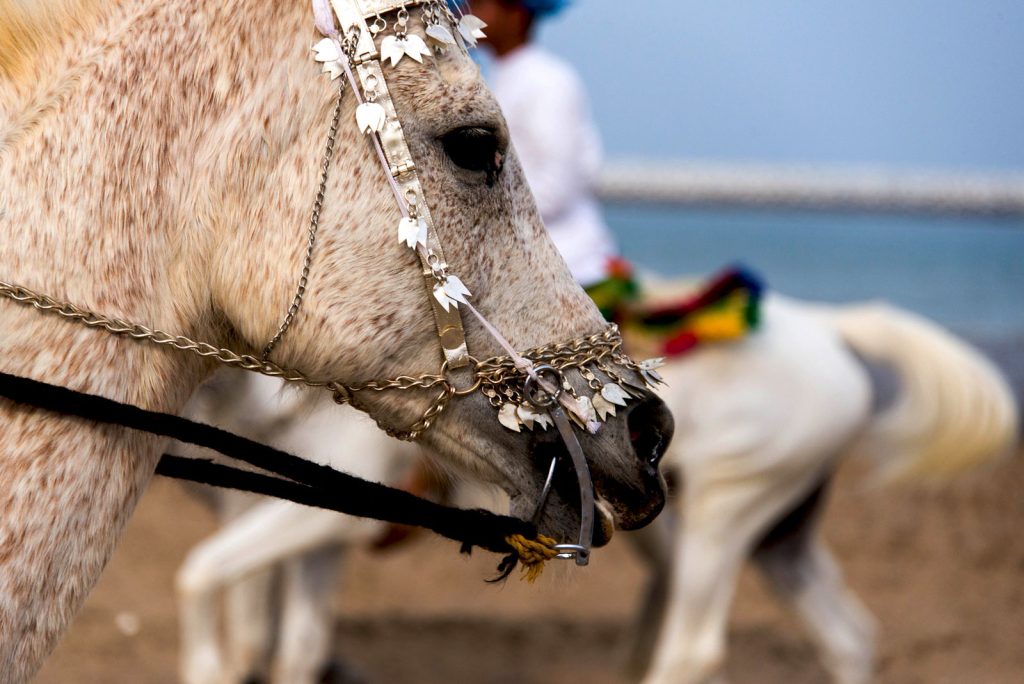
Image by Fuad Al Ansari
Arabian horses have special physical features that make them look elegant. They have a nice-shaped head, expressive eyes, and a special face shape. Their neck is curved, their tail is high, and their body looks well-balanced. They are not too tall and have strong legs. The color of their coat can be different, like solid colors, grays, or bays, making them look even more interesting.
Arabian horses, with their distinctive characteristics, have become a cornerstone for breeding programs seeking to infuse grace, agility, and beauty into diverse equine bloodlines.
What’s the average height of Arabian horses?
Arabian horses are typically of moderate height, with an average ranging from 14.1 to 15.1 hands, which is equivalent to 57 to 61 inches or 145 to 155 cm. This moderate stature contributes to their well-balanced and athletic appearance.
How much do Arabian horses generally weigh?
Arabian horses typically weigh between 800 to 1,000 pounds, equivalent to 360 to 450 kilograms. Their weight is well-distributed on their strong legs, and they have fine hooves, contributing to their agility and endurance. This balanced weight, coupled with their sturdy build, reflects the Arabian horse’s suitability for various activities, showcasing both strength and grace.
What is the temperament and personality of the Arabian horse like?
Arabian horses are known for being smart, sensitive, and loving. These horses become close friends with the people who take care of them. They’re not just strong; they’re also gentle and kind. Arabian horses are good at learning new things quickly. People love them not just because they’re good at running and doing tricks, but also because they can be happy in different places. They are tough and strong because they originally lived in the desert. All these great qualities make Arabian horses not just beautiful and talented but also wonderful friends in many different horse activities.
It’s good to know that Arabian horses might quickly develop bad habits if they’re not handled well. While they might not listen to ineffective training, experienced riders usually find them easy to work with, showing how cooperative they can be.
Global Influence in the horse breeding industry
The global influence of Arabian horses extends far beyond the dunes of their homeland. Arabian bloodlines have made indelible marks on numerous horse breeds worldwide. The Arabian’s genetic contribution is sought after for its ability to enhance endurance, refine physical attributes, and instill a certain spirit that echoes the breed’s historical significance.
From the Andalusian horse of Spain to the Thoroughbred in England, Arabian bloodlines weave through pedigrees, leaving an enduring legacy. Breeders, recognizing the invaluable qualities embedded in Arabian genetics, continue to incorporate these bloodlines into their programs, ensuring the breed’s influence resonates across continents.
Arabian horse most famous bloodlines
The Arabian horse boasts several renowned and influential bloodlines that have left an indelible mark on the breed’s history. Some of the most famous Arabian horse bloodlines include:
Skowronek: Imported to Poland in the early 20th century, Skowronek became a cornerstone of many Arabian breeding programs. His descendants have had a profound impact globally, particularly in Europe and the United States.
Nazeer: An Egyptian-bred stallion, Nazeer’s influence is widespread. His descendants are highly sought after for their beauty and athletic abilities, making them successful in both the show ring and performance arenas.
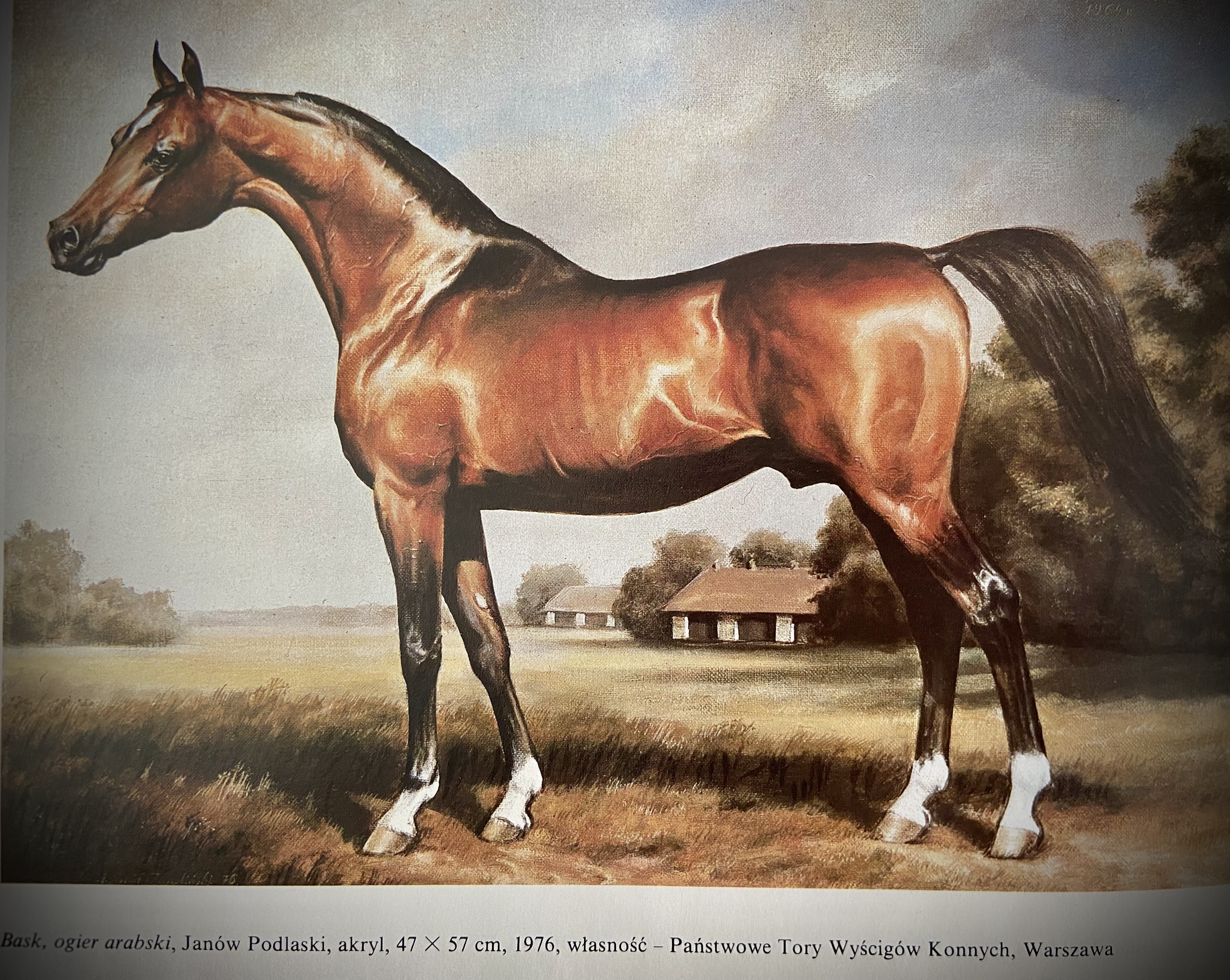
Bask: Image above. Imported to the United States from Poland, Bask became one of the most influential Arabian sires in American history. His descendants are celebrated for their versatility and success in various disciplines.
ML Mostly Padron: A Russian-bred Arabian stallion, Padron left an enduring legacy with his exceptional beauty and refined conformation. His descendants are highly regarded for their elegance and show ring success.
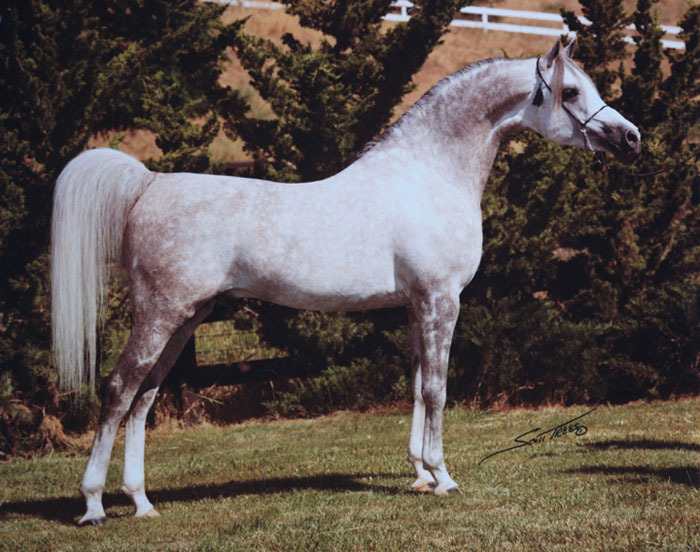
El Shaklan: Image above. Born in England, El Shaklan’s influence reached global proportions. His descendants are known for their superb conformation and have made significant contributions to Arabian breeding programs worldwide.
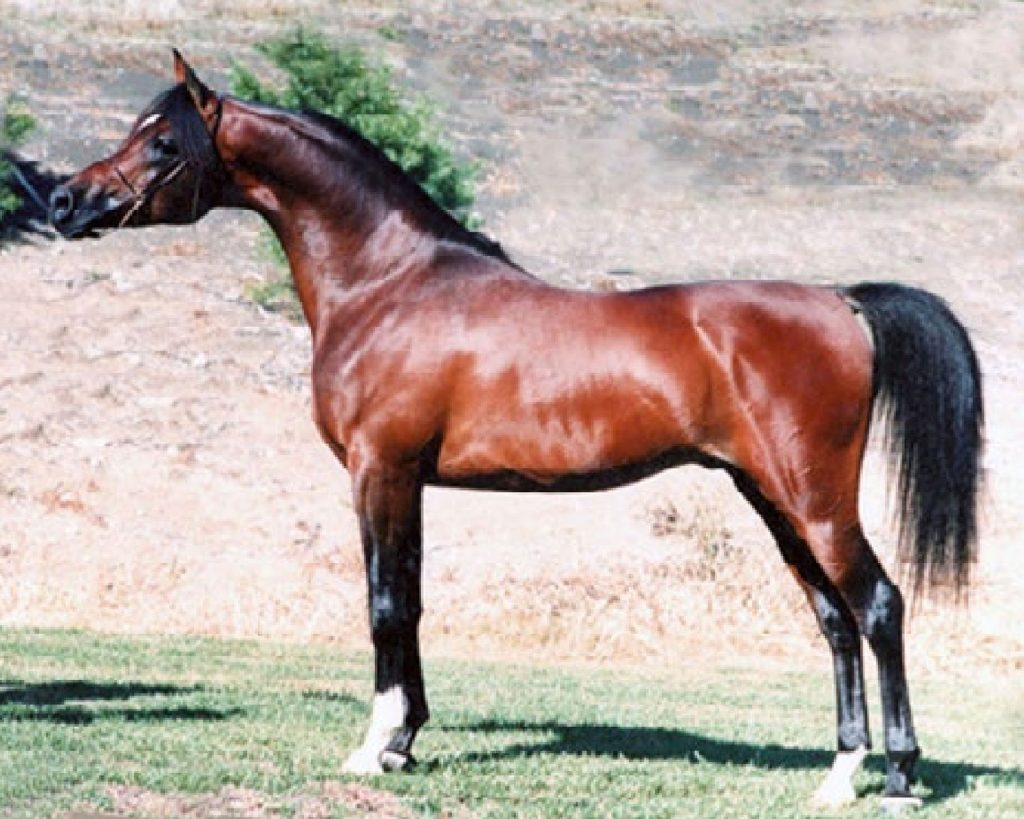
Ali Jamaal: Image above. A stallion with Egyptian and Russian lineage, Ali Jamaal is renowned for his stunning beauty and influential breeding career. His descendants excel in both halter and performance competitions.
Marwan Al Shaqab: Hailing from Qatar, Marwan Al Shaqab is celebrated for his exceptional show ring success and has become a sought-after sire in contemporary Arabian breeding programs.
Which Arabian bloodlines played a role in creating the Thoroughbred breed?
Prominent Arabian bloodlines that significantly influenced the creation of the Thoroughbred breed include the Byerley Turk, the Darley Arabian, and the Godolphin Arabian. These three foundation stallions, each with their distinct lineage, were crossed with native British mares in the late 17th and early 18th centuries, laying the groundwork for the development of the Thoroughbred horse.
Please consider that the bloodlines listed above represent only a fraction of the rich tapestry of Arabian horse lineage. Each has contributed unique qualities to the breed, ensuring the Arabian horse’s enduring legacy in the world of equine excellence.
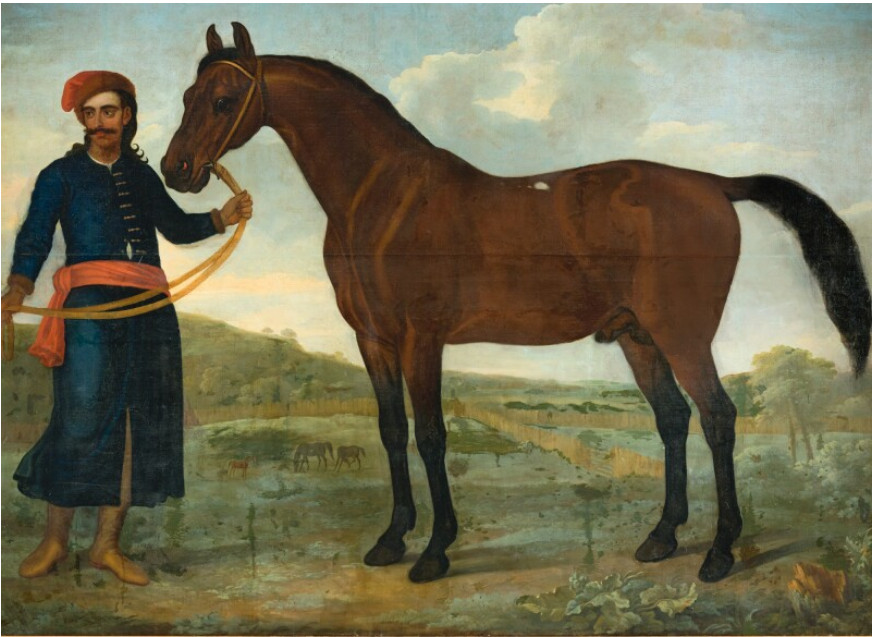
Painting attributed to Thomas Spencer (1730-1763), depicting the Byerley Turk, a stallion at the origin of the Thoroughbred breed.
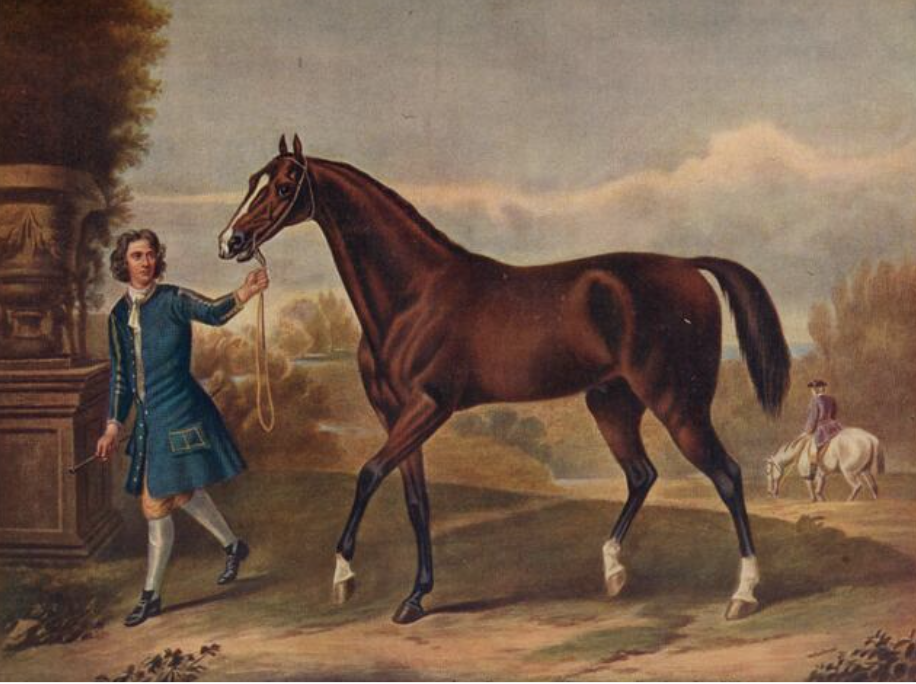
Darley Arabian stallion painting by John Wootton
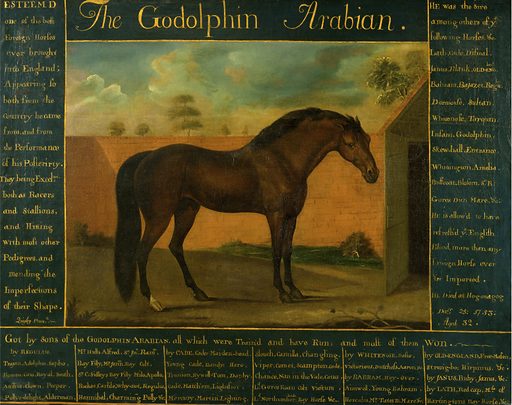
The Godolphin Arabian. Painting by Daniel Quigley
Breed preservation effort and official Arabian horse registries
Preserving the legacy of Arabian horses involves more than maintaining bloodlines; it’s a commitment to safeguarding a cultural heritage. Modern preservation efforts go beyond traditional breeding practices, incorporating advanced technologies to ensure the genetic diversity and health of the breed.
Breeding associations and enthusiasts worldwide play a crucial role in these preservation efforts. They strive not only to protect the breed’s purity but also to celebrate its historical significance. Through education, advocacy, and responsible breeding practices, these efforts ensure that the Arabian horse’s legacy remains vibrant and relevant in the contemporary equestrian landscape.
These organizations, such as the World Arabian Horse Organization (WAHO) and the local, UAE based Emirates Arabian Horse Society (EAHS) are dedicated to recording and maintaining pedigrees. Their primary purpose is to ensure accurate documentation of the ancestry of Arabian horses, facilitating the promotion of responsible breeding practices, and safeguarding the authenticity of bloodlines. Through meticulous record-keeping and adherence to breed standards, these registries contribute to the global recognition and appreciation of the Arabian horse’s unique characteristics and contributions to the equestrian world.
Some of the most famous Arabian horse registries include:
The Arabian Horse Association (AHA): Based in the United States, one of the largest Arabian horse registries globally.
The World Arabian Horse Organization (WAHO): An international organization that aims to preserve the purity and integrity of the Arabian breed.
The Arabian Horse Society of Australia (AHSA): Responsible for the registration of Arabian horses in Australia.
The European Conference of Arab Horse Organizations (ECAHO): Coordinates equestrian activities across Europe.
The US Arabian Horse registry (USAHR): A registry in the United States dedicated to promoting and preserving the Arabian breed.
Regarding the UAE, the Emirates Arabian Horse Society (EAHS) is the official local registry. You can search for your Arabian horse’s pedigree on their website, along with other available services.


